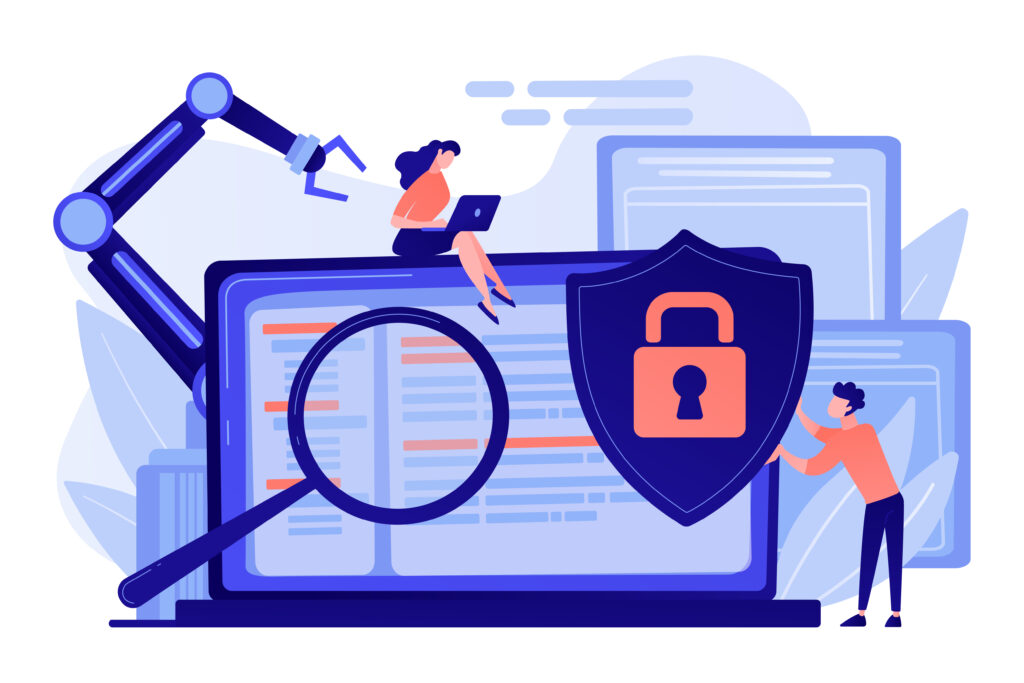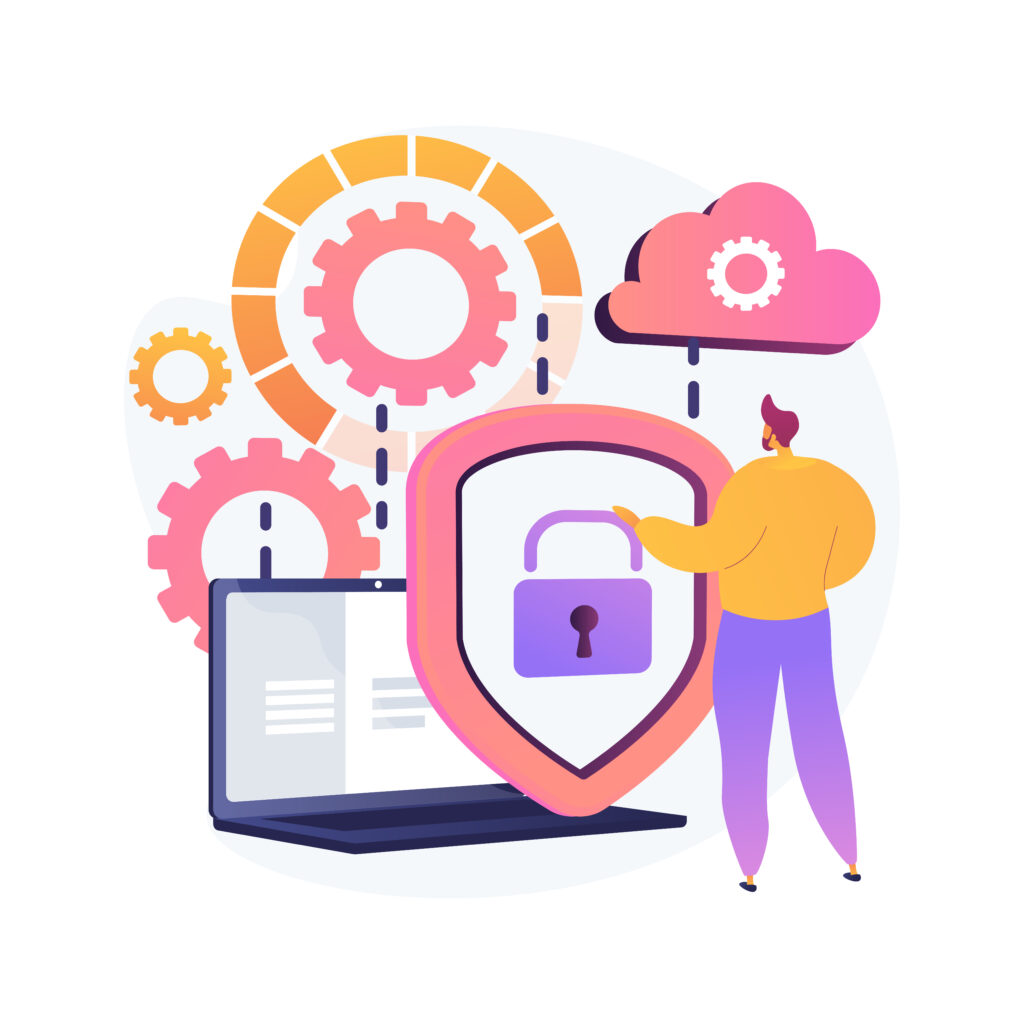Importance Of API Security Best Practices
It is extremely important to learn about the API security best practices. An API (Application Programming Interface) serves as a communication bridge between two or more software programs or components, providing a set of rules, protocols, and tools for building applications. APIs dictate how software components interact and what data they can exchange.

Key Features of APIs:
- Abstraction: APIs simplify interactions by hiding the underlying system complexity, offering a user-friendly interface for developers.
- Modularity: They enable developers to build and update different system components independently.
- Reusability: APIs encourage code reuse by enabling developers to leverage existing functionality instead of building from the ground up.
- Extensibility: APIs can evolve over time, accommodating new functionalities and features.
Why APIs Require Security Best Practices:
APIs are integral to modern applications, facilitating integration and data exchange between systems. However, they can expose sensitive data and business logic, making them attractive targets for cyberattacks. Without strong security measures, APIs are susceptible to a variety of attacks, including:
-
- Injection attacks: Attackers may inject malicious code into API requests to gain unauthorized access or execute harmful actions.
- Broken authentication: Flaws in authentication mechanisms can enable attackers to impersonate valid users and access sensitive information.
- Excessive data exposure: APIs may unintentionally reveal more data than necessary, raising the likelihood of data breaches.
- Lack of resource and rate limiting: Insufficient rate limiting can leave APIs vulnerable to denial-of-service (DoS) attacks.
Best Practices for API Security:

Authentication and Authorization
1: Implement Strong Authentication Mechanisms:
Authentication is the process of verifying the identity of a user or system attempting to access an API. Implement strong authentication mechanisms to protect APIs from unauthorized access and potential misuse.
Key Methods:
- OAuth2: OAuth2 is a popular authorization framework that allows third-party applications to access user accounts with limited permissions, without revealing sensitive credentials like passwords.
Instead, it utilizes access tokens, which can be easily revoked or restricted in scope. This enhances security by allowing granular access control and reducing exposure of credentials. - API Keys: API keys are unique identifiers included in API requests to authenticate and identify the client making the request. Though API keys are straightforward and easy to implement, they should be securely managed to avoid unauthorized use. Using them in combination with other security measures, such as rate limiting and IP whitelisting, can help strengthen protection.
- Tokens: Employing JSON Web Tokens (JWT) or similar mechanisms for stateless authentication is another common method. These tokens contain claims about the user, such as roles or permissions, and are used to facilitate streamlined authorization checks without requiring server-side session storage.
Best Practices:
Sensitive credentials, such as API keys or tokens, should always be stored securely. It’s essential to use environment variables or secure vaults rather than local storage to protect against vulnerabilities like cross-site scripting (XSS) attacks. By safeguarding credentials and applying strong authentication methods, APIs can be effectively shielded from unauthorized access.
2: Enforce Fine-Grained Authorization Controls:

Authorization defines the actions an authenticated user is allowed to perform. By enforcing fine-grained authorization controls, organizations can ensure that users only access the resources they are authorized to, based on their roles or specific attributes. This level of control helps mitigate the risk of unauthorized access and minimizes exposure to sensitive data.
Key features:
- Role-Based Access Control (RBAC): RBAC assigns specific roles to users that dictate their level of access to resources. For example, administrators might have full access to all resources, while regular users are limited to fewer functions. This method simplifies management by assigning roles and permissions in predefined groups, making it easier to control access across large systems.
- Attribute-Based Access Control (ABAC): ABAC provides more dynamic control by basing access decisions on user attributes (e.g., department, job title, or location) and resource attributes (e.g., sensitivity level). This approach enables organizations to apply context-aware access policies that adjust permissions according to various conditions, making authorization more flexible and secure.
Best Practices:
To ensure effective authorization, permissions should be clearly defined and regularly reviewed. The principle of least privilege should be followed, meaning users are only given the minimum access necessary to perform their tasks. By reviewing permissions regularly, organizations can reduce the risk of privilege escalation or unauthorized access due to outdated roles or changing user requirements. Implementing these controls enhances security by tightly regulating access based on precise and current information.
Data Protection

3: Use SSL/TLS for Data Encryption:
Encrypting data while it is transmitted between clients and servers is crucial for safeguarding it against interception and tampering. SSL (Secure Sockets Layer) and TLS (Transport Layer Security) are protocols designed to provide secure encryption for such communications.
Key features:
- Encryption: SSL/TLS encrypts data during transmission, making it unreadable to unauthorized parties. This encryption ensures that any data exchanged over the network remains confidential and secure from eavesdropping.
- These protocols ensure data remains unaltered during transmission. By verifying data integrity, SSL/TLS prevents unauthorized modifications and maintains the accuracy and reliability of the transferred information.
Best Practices:
To maximize security, always use the latest version of TLS. Each new version of TLS includes improved security features and fixes for known vulnerabilities, making it essential to stay updated. Regularly updating your encryption protocols helps protect against emerging threats and ensures that your data remains secure against potential attacks. By adhering to these practices, you enhance the overall security of data in transit and protect sensitive information from unauthorized access and tampering.
4: Validate and Sanitize Input Data:

Proper validation and sanitization of input data are essential for protecting against injection attacks, such as SQL injection and cross-site scripting (XSS). These practices help ensure that only safe, expected data is processed by your systems.
Key features:
- Input Validation: This involves checking that incoming data adheres to expected formats.Verify data types, lengths, and permissible characters to ensure that the application accepts only valid input. By enforcing strict validation rules, you can prevent the application from processing malformed or malicious data.
- Sanitization: Clean input data by removing or encoding potentially harmful characters before the application processes it. This step is crucial for preventing attacks that exploit vulnerabilities in input data handling.
Best Practices:
To effectively manage input data, apply strict validation rules that align with the expected data format and usage. Utilize libraries and tools specifically designed for secure input handling, which offer built-in protections against common vulnerabilities. By rigorously validating and sanitizing input data, you minimize the risk of exploitation through injection attacks and enhance the overall security of your application.
Monitoring and Management

5: Implement Rate Limiting:
Rate limiting is a technique used to control the number of requests a user can make to an API within a designated timeframe. This practice is vital for preventing abuse and defending against denial-of-service (DoS) attacks, which can overwhelm and disrupt the service.
Key features:
- Thresholds: Set limits on how many requests users can make per minute or hour. Setting these thresholds helps prevent system overload and ensures that resources are allocated fairly among users, reducing the risk of performance degradation or service interruption.
- Response Handling: When users exceed the defined rate limits, return clear and informative error messages. These messages should guide users on how to correct their behavior, such as waiting before making additional requests or contacting support for further assistance.
Best Practices:
Regularly monitor usage patterns to understand traffic trends and adjust rate limits accordingly. This ongoing adjustment helps accommodate changes in traffic volume and system performance, ensuring that the rate limits remain effective and relevant. By continuously refining rate limits based on actual usage and system needs, you maintain a balance between service availability and protection against abuse.
6: Maintain Audit Trails and Logging:

Thorough logging of API requests and responses is essential for monitoring activity and identifying potential security incidents. Comprehensive audit trails help track user interactions and detect unusual or unauthorized behavior.
Key features:
- Comprehensive Logs: Capture detailed information including timestamps, user identities, request types, and response codes. This information provides a complete record of API interactions, enabling detailed analysis and forensic investigation if needed.
- Anomaly Detection: Examine logs to identify patterns or behaviors that deviate from the norm. Detecting anomalies can reveal potential security breaches, misuse, or other issues that require immediate attention.
Best Practices:
Regularly review logs to maintain an up-to-date understanding of API activity. Implement automated monitoring tools that can detect and alert on suspicious activity, ensuring timely responses to potential security threats. By consistently monitoring and analyzing logs, you enhance your ability to respond quickly to incidents and maintain the overall security of your API infrastructure.
Configuration and Maintenance

7: Prevent Security Misconfiguration:
Security misconfigurations can lead to significant vulnerabilities if not properly managed. Regularly reviewing and updating configurations is crucial to maintaining a secure environment and preventing potential exploits.
Key features:
- Version Control: Maintain a record of all deployed API versions to ensure that outdated or vulnerable versions are not accessible. This practice helps prevent the exposure of known weaknesses and ensures that only current, secure versions are in use.
- Configuration Management: Use tools designed to automate and enforce secure configurations across various environments. These tools ensure that security settings apply and maintain consistently, reducing the risk of misconfigurations.
Best Practices:
Conduct regular security audits and vulnerability assessments to identify and address any misconfigurations. These evaluations help uncover potential security gaps and ensure that configurations remain up-to-date and secure. By systematically reviewing and correcting configurations, you enhance the overall security posture of your systems and reduce the risk of security breaches.
8: Centralize API Management:

An API gateway serves as a centralized hub for managing and securing API traffic, enhancing control and monitoring across all API interactions.
Key features:
- Traffic Management: Efficiently route and manage API requests through a single gateway. Centralizing these functions allows you to apply security policies and rules consistently, ensuring that all requests follow the established security protocols.
- Analytics and Monitoring: Gather and analyze data on API usage, performance metrics, and security events. This capability offers valuable insights into API usage, performance, and any security issues that require attention.
Best Practices:
Utilize API gateways to enforce crucial security measures such as authentication, authorization, and rate limiting across all API endpoints. Centralize these functions to streamline security management and apply policies uniformly, enhancing the security and efficiency of your API infrastructure.
Development Practices

9: Integrate Security Early in Development:
Key features:
- Security Testing: Implement automated security testing tools during the development phase to detect vulnerabilities early. These tools help identify issues such as code flaws and security weaknesses before they become problems in the deployed application.
- CI/CD Integration: Integrate security checks into Continuous Integration/Continuous Deployment (CI/CD) pipelines. Integrate security assessments throughout the development cycle to perform continuous checks and catch vulnerabilities as developers write and deploy code.
Best Practices:
Encourage a security-first mindset within development teams to prioritize secure coding practices from the outset. By embedding security considerations into every stage of development, teams can better manage risks and build more secure applications from the beginning. This approach fosters a culture of security awareness and helps prevent vulnerabilities from reaching production.
10: Educate and Train Development Teams:

Equip developers with comprehensive security knowledge to reduce risks related to coding vulnerabilities and ensure they follow secure development practices.
Best Practices:
- Training Programs: Offer ongoing training sessions focused on secure coding practices, threat modeling, and API security. These programs help developers understand potential security risks and learn how to address them effectively.
- Resources and Documentation: Provide access to current resources, guidelines, and tools that support secure development. This ensures that developers have the necessary information and tools to implement best practices and stay informed about the latest security trends and techniques.
Best Practices:
Encourage collaboration between security and development teams to facilitate the exchange of knowledge and insights. By working together, both teams can better understand and address security challenges, ultimately enhancing the overall security posture of the organization. This collaborative approach ensures teams integrate security considerations throughout the development process.
[Want to learn more api security best practices? Click here to reach us.]
Conclusion
Implementing strong authentication mechanisms, enforcing fine-grained authorization controls, and utilizing SSL/TLS for data encryption form the foundation of a secure API environment. Additionally, validating and sanitizing input data, along with implementing rate limiting, are essential for safeguarding against common threats and ensuring the integrity of your systems.
Maintaining comprehensive audit trails and logging helps in monitoring and identifying potential security incidents, while preventing security misconfigurations and centralizing API management further enhances your defenses. Integrating security early in the development lifecycle and investing in continuous education for your development teams are proactive steps that foster a culture of security awareness and resilience.
At Bobcares, our software development support services can help you to implement these best practices effectively. Our expert team can assist in developing secure APIs, integrating security into your development processes, and managing ongoing support to ensure your systems remain protected against evolving threats. By partnering with us, you can enhance your API security posture and maintain a robust defense against potential vulnerabilities.
By adhering to these best practices and leveraging Bobcares’ expertise, organizations can significantly mitigate the risks associated with API vulnerabilities and protect sensitive data from unauthorized access and malicious attacks. Staying vigilant and adaptable in your security practices will ensure that your APIs remain secure, reliable, and resilient against emerging challenges.







0 Comments